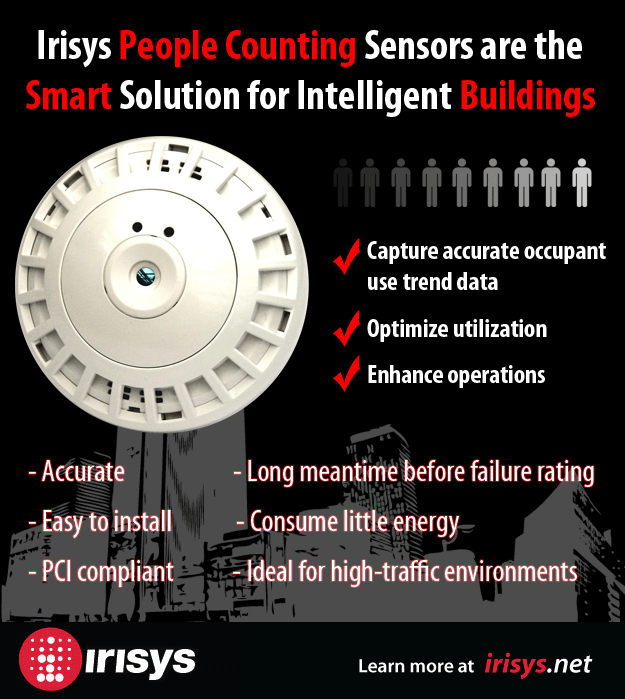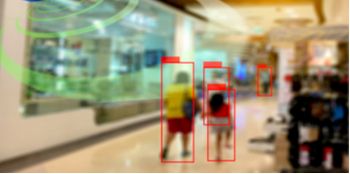Using workplace people counting to create an occupant-centric building
People counting systems were first championed by retail businesses seeking to understand how customers use store space. By taking key insights from average data collected over time, retail businesses are able to optimise the in-store experience for customers, with long-term business benefits.
When it comes to people counters, shops and workplaces aren’t all that different. Whether you’re creating a seating area in your store to encourage customers to stay, play (and pay) for longer, or deciding how to build breakout areas that facilitate easy collaboration, people counting technology can help you create a natural, easy flow in your space that translates to an all-round better experience.
Therefore, corporate workspaces are picking up the torch, using workplace people counting to create occupant-centric buildings adapted to how people are actually using their space.
Occupant-centric workspaces are safe, comfortable, free-flowing and efficient, helping make sure that everyone in your building gets where they need to go with ease and that you have the spaces that they require. People counting sensors are leading the way in helping building managers optimise their buildings for hybrid working. Electronic devices are installed to help monitor movement and automatically count the number of people who enter and exit a building, floor or area.
Although it is the #1 benefit right now, having people counting technology installed does far more than keep the employees in your building safe and happy. Such technology can feed you a wealth of occupancy-related data, which in turn can be used to streamline your space, cut costs and take your building into the future.
Different types of workplace people counting
Different types of workplace people counting work for different kinds of businesses. No matter how big or small your organisation, and no matter what sector you operate in, we guarantee there is a workplace people counting solution out there to help make your life easier:
IR people counters
Often considered the first people counting solutions, these are horizontal infrared beams positioned at the entrances and exits of rooms and buildings. When the beam is broken by a person crossing into the space, they add a person to the count. This has its problems, as it can sometimes be difficult for the beam to make out the direction of travel and the difference between individuals and groups who enter or exit together.
Thermal Cameras
While not a traditional camera because they remove the use of video images, thermal counters are better at making out individuals because they work by detecting people moving in all directions from their individual body heat profiles, ensuring the privacy of the individuals is retained.
CCTV
Provided it is positioned in the right place, people counting functionality that requires a highly accurate AI algorithm to process the video in order to detect and count people, can be added to existing CCTV setups. However, due to the nature of CCTV cameras, they are not often installed within the building because of privacy concerns and tend to be positioned at building entrances and exits for optimal security reasons, not necessarily for optimal counting functionality.
Mono and Stereo overhead cameras
Ceiling-mounted systems utilise features like facial recognition, temperature scanning and mask recognition available, however, because they use video to count people coming in and out, they warrant privacy concerns and the accuracy of this counting can be compromised by lighting conditions.
Time of Flight Sensors
Time of Flight counters work by emitting very short infrared pulses of light to construct sophisticated, anonymous 3D images of people moving through space. Unaffected by changes in light, temperature or humidity, with many of the additional features available to overhead sensors, time of flight sensors are pretty much as accurate as it gets when it comes to workplace occupancy monitoring.
What are the benefits of people counting technology and the power it holds in creating occupant centric buildings?
In the post-pandemic, post workplace innovation world, staff want a lot more from the buildings they work in than they did, say, ten years ago. Let’s dive a little deeper into some of those benefits of workplace people counting.
Safety
According to a recent study, 80% of UK workers think poor air quality could be having an impact on their health - and one in ten feel stressed at the prospect of sharing washrooms and other facilities when they return to the office.
To feel confident as they step back through those doors for the first time, it is essential that staff see that their experience has been considered and that real steps have been taken to safeguard their health as they work.
We know that staff are thinking about hygiene and air quality. Integrating your HVAC system with occupancy sensors allows you to improve efficiency and switch on only when someone is actually using the space. It’s worth noting that good air quality has also been proven to have a huge impact, not just on employee health and happiness, but on productivity too - reducing headaches and the risk of bacteria and virus transmission that could result in absenteeism.
Whether alerting cleaning staff to high-traffic washrooms or helping employees find a clean desk, the occupancy data collected by workplace people counting solutions also works wonders in increasing hygiene when integrating it with cleaning scheduling systems.
Efficiency
The ways in which collecting occupancy data can help you make your building more efficient are many and varied.
According to one study, two in five office workers spend an average of 60 minutes each week searching for available desks, conference rooms or colleagues. Designing your building space around improving these inefficiencies is crucial to reducing the valuable time people spend on looking for the places and people they need, queuing for lunch, toilets and the office gym, and more time on their important thinking, talking and tasks.
Integrating the occupancy data with meeting room and desk booking systems can go a long way towards improving the employee experience, with built-in workplace people counters there as a tool to help people plan their day. Combining sensors with a wayfinding app can help employees find each other.
The kind of space employees want
Having a workplace people counting solution doesn’t just make things better from a practical perspective - it helps give your staff a better experience.
With flexible working at an all-time high, the best workspaces will be those set up for collaboration. Occupancy sensors have grown in popularity to become an essential tool, giving you an improved understanding of how your people like to work.
Considerations around people counting solutions for the workplace
Privacy is another key concern when choosing a people counting solution for your workspace. People might appreciate being kept safe, but they won’t appreciate being watched 24 hours a day.
New research by HR Exchange Network suggests that as many as 75% of employees are not OK with video cameras tracking their personal whereabouts. Our people counting sensors use cutting-edge infrared Time-of-Flight (ToF) technology to overcome this very real concern, with intrinsically anonymous 3D imaging data helping people feel relaxed as they go about their working lives.
The solution you chose will also need to be accurate and easy to integrate with your existing systems to extract maximum value; your HVAC, desk and meeting room management systems, and cleaning scheduling tools, for example.
Irisys’ True occupancy solution works with extreme precision, collecting real-time data that can be processed and integrated into third-party systems to help you make better business and staffing decisions.
If you would like to understand more about how a workplace people counting sensor can help create an occupant-centric building for your employees, request a demo or speak with an expert today.
Share this
You May Also Like
These Related Posts

Benefits of Irisys People Counting Sensors for Smart Buildings

Benefits of People Counting in a Post COVID-19 World

Leveraging People Counting Analytics For The New Workplace
Connect with us
Need more information? Ready to get started? We're here to help, get in touch.


